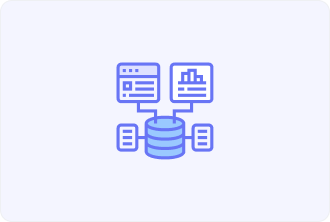Data Definition

Data — is the certainty value set, finite or infinite, containing various pieces of information that describe facts, quantities, qualities, statistics, and so on. The data represent information that can be derived from measurements, observation, inquiries or analysis and presented in numerical or symbolic form for further presentation of the basis for computer processing.
It could be added that under the structures, data is normally organized into entities and accommodate more meaning as they themselves can be used to refer to the data in structures.
Information exists in scientific research, economics, and virtually in any other form of human organizational activity. Whether drawn from traditional methods of data analysis and computational capacity, normal tools are falling hopelessly short in dealing with such huge (petabyte scale) and ever-growing datasets. In this context, a field in data science is applying machine learning techniques in a way where analytical methods can be effectively applied to big data.
Types of data
Data thus represents variables and can be used to make operations on computers. Below, we outlined some of the kinds you may encounter:
- Numerical. When programmers, analytics, managers and marketers inspect quantitative data, they deal with numbers, such as age, users, goods on sale, etc.
- Descriptive. Providing answers to questions like “why” and “when”, qualitative data gives businesses an understanding of their users’ pain points, preferences and behavior.
- Structured. This type of data is presented neatly, categorizing the names of customers, their numbers and many other details. It allows you to quickly find the necessary information and review it since information is displayed in the order in SQL databases.
- Unstructured. It is part of daily life, such as PDF files, photos, emails and documents.
- Semi-structured. Even though this kind of information can’t be sorted and recorded as easily as the structured ones, it comes in the form of log files with tags that help us differentiate the content.
- Big data. Blending all the previously stated variations of data, it appears in different ways. The instances include surveillance video systems, records from IoT devices that can be stored on the cloud, NoSQL databases and data lakes.
How does data help?
The ways you can leverage the above-mentioned types of insights are numerous. First of all, it gives you the opportunity to make informed decisions. Instead of guessing and randomly choosing new strategies, businesses inspect their customers’ demands, evaluate their competitors, investigate the market and obtain particular findings that lead to better performance and confidence.
Speaking of modern business-making, it’s impossible to imagine without predictive analytics. Historical, current and statistical information supplied with Artificial Intelligence tools help companies determine weak spots in their tactics and identify decisions that may lead to decreased loyalty and increased churn retention. For example, entertainment firms use them before making new movies to determine if it will be accepted by consumers.
Data is playing a pivotal role in strengthening security now and the same is true in the future, with even more variations of implementation. Records help spot fraud and patterns that lead to vulnerability of a system and offer actions to prevent leaks.
Finally, data makes it easier to personalize the experience of customers. Analyzing their choices, applications offer suitable recommendations that result in new purchases. The machine learning and NLP tools enable programmers to code chatbots that provide valuable assistance.